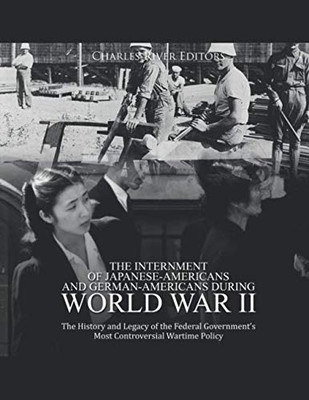
The Internment Of Japanese-Americans And German-Americans During World War Ii: The History And Legacy Of The Federal GovernmentS Most Controversial Wartime Policy - 9781673712469
Independently published
ISBN13:
9781673712469
$15.78
*Includes pictures *Includes a bibliography for further reading The internment of Japanese Americans in the wake of the attack on Pearl Harbor is second only to slavery in terms of America's most tragic and regrettable chapters in history. While the forced relocation and internment of Japanese Americans living on the West Coast during the Second World War is widely recognized - they have even received apologies and compensation from the U.S. government - what is not as well-known is that between 1941 and 1948, approximately 10,000 Americans of German descent were also forcibly interned at camps scattered across the United States. Some refugees, who had fled from Germany in an attempt to escape Nazi persecution, were rounded up, interned, and later used in a prisoner exchange program between the United States and German governments. The American government also went to great lengths to secure Germans living across Latin America who they believed posed a tangible threat should they cross America's southern border. In spite of a preponderance of evidence affirming the occurrence of these events, the United States government persistently denied it for decades. The public was largely unaware these atrocities had occurred, and hardly a single history was found to mention them. Winkler, for instance, fallaciously asserted that "German-Americans, treated poorly by their fellow Americans during World War I, were now more fully assimilated into American life and were largely left alone." The legal precedent for interning enemy aliens during wartime was the Alien Enemies Act of 1798. This legislation permitted the detention of enemy aliens or "aliens of enemy ancestry" by the federal government, upon declaration of war or tangible threat of invasion. Under President Franklin D. Roosevelt's direction in 1939, J. Edgar Hoover began a "secret five-year plan to list all individuals who he believed posed a security risk to the United States." Roosevelt was keenly aware of the public hysteria and paranoia regarding aliens of enemy ancestry during the First World War and sought to do things differently as another potential war approached. Later that same year, Hoover reported to Congress that he had over 10,000,000 people already under surveillance and had collected enough data to track these individuals down and arrest them, if necessary. While certain security concerns were undoubtedly legitimate, in order to minimize the likelihood of history repeating itself, the federal government was cautious to refrain from ethnically-oriented propaganda. Roosevelt was unwilling to subject the American people to another era of lynching and widespread persecution, and in a roundabout way, preemptive registration and possible internment could have been one way to avoid it. During the First World War, anti-German sentiment had led to the virtual eradication of an entire people's culture, not to mention the loss of lives on the part of those with ethnic ties to the enemy who displayed even the slightest hint of anti-patriotism. Internment had been attempted during World War I, but on a much lesser scale than Roosevelt had envisioned. Thus, ironically, the Roosevelt administration actively violated the civil rights of those with enemy alien ancestry to prevent similar hysteria from gripping the nation a second time, and ultimately the authorities failed to establish that some who were detained actually posed a national security risk. The Internment of Japanese-Americans and German-Americans during World War II: The History and Legacy of the Federal Government's Most Controversial Wartime Policy examines one of the darkest chapters in American history. Along with pictures of important people, places, and events, you will learn about the decision to intern Japanese-Americans and German-Americans like never before.
- | Author: Charles River Editors
- | Publisher: Independently Published
- | Publication Date: Dec 09, 2019
- | Number of Pages: 204 pages
- | Language: English
- | Binding: Paperback
- | ISBN-10: 1673712460
- | ISBN-13: 9781673712469
- Author:
- Charles River Editors
- Publisher:
- Independently Published
- Publication Date:
- Dec 09, 2019
- Number of pages:
- 204 pages
- Language:
- English
- Binding:
- Paperback
- ISBN-10:
- 1673712460
- ISBN-13:
- 9781673712469





